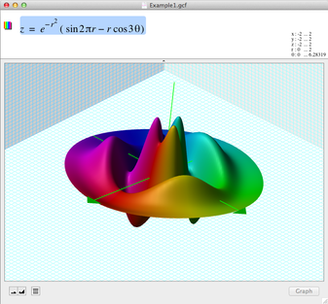The Programmer That Couldn’t Quit
At the time of this writing, Apple — the company that very possibly makes the device you’re reading these words on — is worth a lot of money. As of market close yesterday, the company’s market cap is a smidge more than $2 trillion, and by “smidge” I mean $60 billion. When tens of billions of dollars is a rounding error… well, it’s safe to say that Apple is worth a lot of money.
So if you’re looking to volunteer for a good cause this holiday season, spending your time helping Apple (unpaid) is probably not a smart choice. And yet, turn back the clock a couple of decades, and a programmer named Ron Avitzur did just that. Kind of.
In 1994, Apple released a new personal computer called the Power Macintosh. Despite the years the company put into its development, the Power Mac wasn’t Apple’s most successful product line. While it lasted in the market for a few years, other PC makers came out with machines consumers liked better, and by 2005, Power Macs were no more. But if you had one of the original ones, you had something Avitzur made — a really neat graphic calculator program that could show 3D visualizations of all sorts of mathematical equations. Stuff like this:

Pretty neat, even by today’s standards, right? It shouldn’t have been there, though.
Apple hired Avitzur as a contractor “on a secret project,” in his own words. But the project never saw the light of day, and Avitzur’s part on that project — developing a graphic calculator — was going down the tubes with it. In August of 1993, Apple informed him that his contract was not going to be renewed. He was offered another role at Apple but wasn’t all that interested. He had received good feedback on his calculator and wanted to see it completed.
That seemed impossible, though: while Avitzur was the person developing the software, all of the code — and the equipment needed to build it — was Apple’s. (As Wired notes, “Avitzur needed access to Apple’s brand new PowerPC chip, and prototype machines weren’t allowed off the premises.”) And Avitzur was just moments away from not being allowed access to all of that. But things changed on his last day of work, as Mental Floss recounts:
On the last day of the canceled project, Avitzur’s manager called him into her office to say goodbye. He hadn’t completed the length of his contract, but the company would pay it in full anyway.
“Just submit your final invoice for what’s left,” she told him. That’s when it clicked: If Avitzur didn’t submit the invoice, his contract stayed in the system. And if his contract stayed in the system, his ID badge would keep getting him in the front door.
Having saved a lot of money over the course of his Apple contract, and with his girlfriend an airplane flight away anyway, Avitzur had the financial wherewithal to be unemployed for a while and a social life that let him do whatever he wanted. So, he kept coming to work, despite the fact that he didn’t actually work there anymore.
For the next three months, Avitzur, with the help of some friends he enlisted and aided by what he called “the power of corporate apathy,” got access to the machines he needed and kept plugging away on the project. Whenever someone asked what he was doing there, he typically told the truth — in his words, “most engineers at Apple had been through many canceled projects and completely understood my motivation.” But not everyone was so accomodating. When Security got wind of his decision to work for free, they weren’t willing to get what he wasn’t asking them to pay for, and canceled his ID badge.
Undeterred, Avitzur asked his small army of confidants to sneak him into the building, and they obliged. Apple, coincidentally, went through a round of layoffs at roughly the same time, leaving behind a lot of empty offices and workstations; as a result, it was pretty easy for Avitzur to find a place to get his “work” done. Another former co-worker, Greg Robbins, joined him in this unpaid quest to build a graphing calculator, and together, they finished the project. In November of that year, higher-ups at Apple (well, technically, everyone is higher up than an unemployed trespasser, but you get the idea) invited the pair to demo the software — and it was a hit.
The graphing calculator became part of the standard software preinstalled on an estimated 20 million Power Macs over the course of the subsequent few years. As for Avitzur and Robbins, that was its own reward, and that’s good — because they didn’t get paid much for their unauthorized programming. Per Wired, “the company eventually licensed the software and paid Avitzur and Robbins a ‘nominal sum.’
Bonus fact: The pre-Mac Apple computers — and in particular, the Apple III, which came out in 1980 — sometimes had a problem where circuits would come loose from their sockets. The fix? In the words of one tech site, “Apple recommended users facing problems with the Apple III lift the computer two inches and drop it, as this would set the circuits back in place.”
From the Archives: Camp AOL: A teenager who took after Avitzur.
